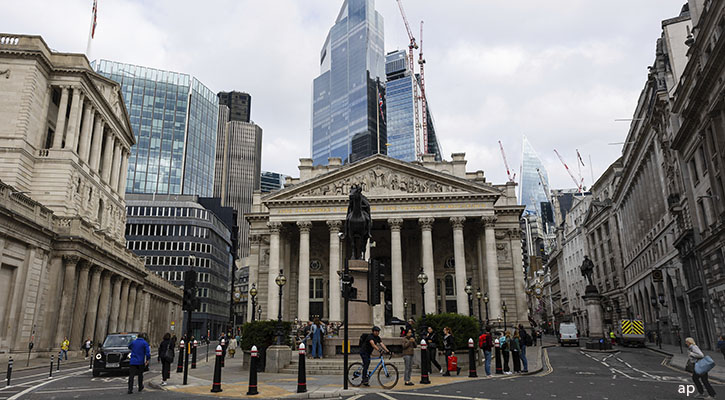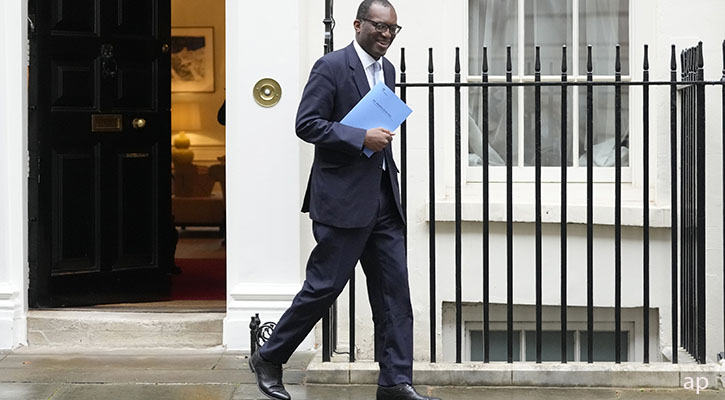
The Bank of England on Monday said it has doubled the size of a temporary bond-buying programme, which it kicked off following market turmoil after the UK government's mini-Budget announcement last month.
The Bank doubled the size of daily auctions to a maximum of £10 billion, from £5 billion. And confirmed on Monday that the scheme, which had the potential to buy up to £65 billion of gilts, would end this week. Some £5 billion of bonds have been purchased so far.
Following the announcement of the mini-Budget last month, and the turmoil that ensued, the Bank of England decided to buy up long-dated UK government bonds, or gilts.
"To date, the bank has carried out eight daily auctions, offering to buy up to £40 billion, and has made around £5 billion of bond purchases. The bank is prepared to deploy this unused capacity to increase the maximum size of the remaining five auctions above the current level of up to £5 billion in each auction," the BoE said.
Tom Selby, head of retirement policy at AJ Bell, comments: “The Bank of England has further loosened its daily gilt buying purse strings as it prepares to wind up the dramatic intervention it first announced on September 28.
“In addition, it has set out its plan beyond this Friday, when it will stop buying gilts, with a clear-eyed focus on maintaining order in the market and preventing a ‘death spiral’ of forced gilt sales from UK pension funds.
“However, there remains huge uncertainty over the adjustment period once the Bank steps back from its emergency intervention. It will no doubt be crossing its fingers that the certainty it has attempted to provide today will ensure calm is restored to the market.”
The Bank also said on Monday said it will launch a temporary expanded collateral repo facility, or TECRF, to ease market pressures through liquidity insurance operations, running beyond the end of this week into November. We explain why the Bank is doing this in the article 'Why Are UK Pension Funds Under Stress?'
Medium Term Fiscal Event - Now on October 31
Chancellor Kwasi Kwarteng has bowed to pressure to bring forward the publication of his financial strategy and independent economic forecasts - to Halloween.
Completing another U-turn, Kwarteng agreed to set out his medium-term fiscal plan alongside Office for Budget Responsibility (OBR) predictions on October 31.
The chancellor had been resisting setting out the details ahead of November 23 after he set out his multibillion-pound package of tax cuts to be paid for by borrowing.
Commons Treasury Committee Chair Mel Stride welcomed the move, saying the documents may result in a smaller rise in interest rates which is "critical to millions" of mortgage holders.
But the senior Tory MP warned this would only be the case if the plan "lands well with the markets" ahead of a Bank of England meeting on November 3.
By mid-morning, the pound was at $1.11, compared to $1.16 a month ago. The 10-year gilt is now at 4.32%, up 122 basis points on September 10.
Susannah Streeter, senior investment and markets analyst, Hargreaves Lansdown, said this was a two-pronged approach for the Treasury and the Bank:
‘’With the pound remaining weak and government borrowing costs inching up again towards worrying levels, the UK government and the Bank of England have launched a two-pronged attempt to calm markets. Policymakers and politicians are clearly nervous about seeing a repeat of the mini-financial crisis unleashed following the presentation of the Truss administration’s slash and spend plans and fresh moves are being made to try and repair the damage.”




























